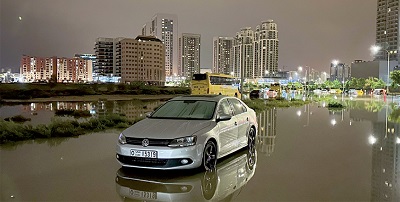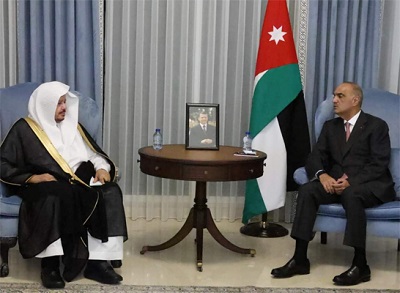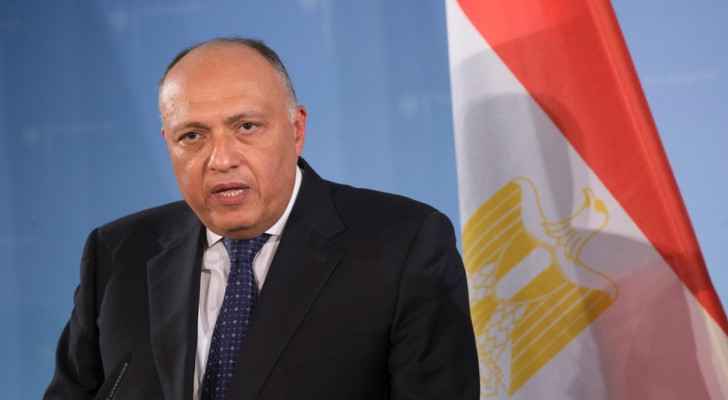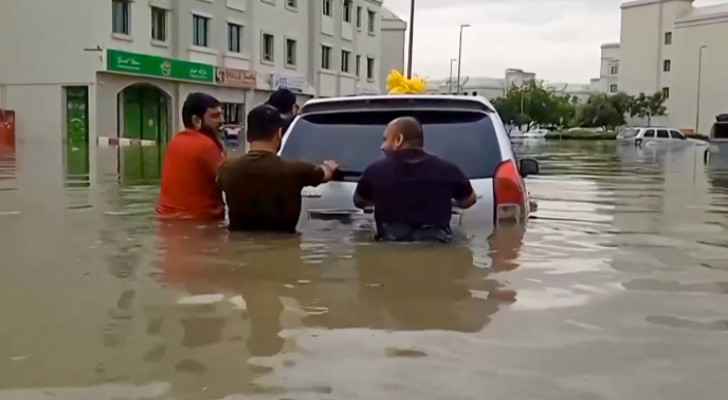Singapore's Reopening in the Age of Omicron - By Daniel Moss, Asharq Al-Awsat
This was no typical start to the work week in Singapore. At a bus depot in the city-state's northern suburbs, people were lining up to do something extraordinary: make the journey of less than a mile across the water to Malaysia. Once almost as routine as the commute between New York and New Jersey, the economically vital border saw about 300,000 people cross daily pre-coronavirus. It has been shut to most citizens since the pandemic began. For a very small number, that began to change Monday morning. As the world was learning to add omicron to its Covid-panic dictionary, these few dozen travelers were taking part in Singapore's most symbolic attempt yet to unbolt its borders. It’s an open question whether the government can tolerate the risks that come with this small step.
The mundane scene at Woodlands interchange — people with bags patiently queuing, socially distanced, paperwork in hand — belied the significance of what was occurring. Many of those were ready to see their families for the first time in two years. But while this wasn’t a weepy airport scene from the 2003 movie “Love Actually,” it was a marker in the course of Singapore’s struggle with the pandemic: A tiny, rich republic dependent on imported labor, energy, food and water feels just confident enough to ease restrictions on its land boundary. Malaysia is no ordinary neighbor. One of Singapore’s most important trading partners, the two share a deep political and cultural history.
While the land travel is aimed, initially, at reuniting families and is being done in a very gradual and tightly controlled manner, its success or failure will say a lot about the appetite some prosperous and highly vaccinated economies have to truly open. Live with Covid-19? Sure. But how much of the disease, and what level of risk, can you tolerate? It has become the question as scientists race to assess the transmissibility of the omicron variant and the effectiveness of existing shots. Countries around the world are already erecting fresh travel barriers: Japan barred new foreign arrivals, while Australia delayed the opening of borders to foreign workers and students. South Korea may postpone its planned easing measures.
Many think of Singapore's top-notch airport at Changi as the barometer of the nation's ability to re-engage. The Woodlands bus terminal ought to be at least as useful a yardstick. A causeway stretches over the water border running through the Strait of Johor; calling it a “land lane” distinguishes it from quarantine-free air routes for vaccinated travelers between Singapore and Kuala Lumpur, which also began Monday. The program is beginning with a trickle: just a few thousand each day on a coaches operated by only two companies.
Even if the people waiting to board the 10 a.m. bus expressed some concern about borders slamming shut again, trapping them on the other side, it wasn't going to stop them. The chance to see family is a risk worth taking.
For Nagarajan, a 29-year-old maintenance engineer from Ipoh in northwestern Malaysia, this homecoming would be more meaningful than almost any other. Last year, while stuck working in Singapore, his wife had given birth to their daughter, a child he has seen in only pixelated form. His visit is a surprise. “I hope they are home,” he cracked. Ellie, a Malaysian who works in finance in Singapore and hasn't been home for two years, wasn't going to let omicron ruin her day. She had filled out the necessary forms, was fully vaccinated and followed the procedures to book her seat on the bus. What more was there she could do, Ellie asked. What did she look forward to most? “My mum's homecooked food. It's precious.”
The pragmatism of these passengers notwithstanding, I did seriously wonder about their ability to return. Would folks with tickets in coming days and weeks actually get to use them? On Sunday, Singapore suspended vaccinated travel lanes with several Middle Eastern nations, hours before they opened for applications, citing risks from omicron. Singapore tried several times the past 18 months to start an air-travel bubble with Hong Kong, only to abandon the effort. One attempt was called off on the eve of the first departure.
The government has been careful not to rule out further changes to border rules, which remain some of the world's tightest. “We are not sure yet, but we may well be forced to take a few steps back before we can take more steps forward,” Prime Minister Lee Hsien Loong said in a speech Sunday.
If Singapore does close down again, it will have a much larger impact than expats visiting family or Singaporeans off to Europe for some skiing. You don't have to go far to find evidence of labor shortages. Health authorities are offering a S$12,000 ($8,750) finder fee for referring experienced nurses. “Help wanted” signs are plastered on walls of everything from vegan snack-food stores downtown to neighborhood hawker centers dotting the suburbs. Last week, while strolling to lunch, I met a food delivery robot being tested by Grab Holdings Inc.
Singapore avoided paying a huge economic price for its tough pandemic measures this year because it was lifted by the big rebound in global commerce. The expansion will be much slower in 2022. For a country that proclaims its openness to the world and has a very high rate of vaccination, keeping the buses running shouldn’t be too much to ask.
Latest News
 Security Council to vote Thursday on Palestinian state UN membership
Security Council to vote Thursday on Palestinian state UN membership Dubai reels from floods chaos after record rains
Dubai reels from floods chaos after record rains Khasawneh, Saudi Shura Council speaker discuss bilateral ties, regional developments
Khasawneh, Saudi Shura Council speaker discuss bilateral ties, regional developments Egyptian Foreign Minister condemns potential Palestinian displacement as 'war crime'
Egyptian Foreign Minister condemns potential Palestinian displacement as 'war crime' Travelers from Jordan advised to confirm flights amid Gulf weather turmoil
Travelers from Jordan advised to confirm flights amid Gulf weather turmoil
Most Read Articles
- King, Bahrain monarch stress need to maintain Arab coordination
- Dubai reels from floods chaos after record rains
- Security Council to vote Thursday on Palestinian state UN membership
- Khasawneh, Saudi Shura Council speaker discuss bilateral ties, regional developments
- Tesla asks shareholders to reapprove huge Musk pay deal
- Jordan will take down any projectiles threatening its people, sovereignty — Safadi
- Hizbollah says struck Israel base in retaliation for fighters' killing
- Princess Basma checks on patients receiving treatments
- Knights of Change launches nationwide blood donation campaign for Gaza
- The mystery of US interest rates - By The mystery of US interest rates, The Jordan Times